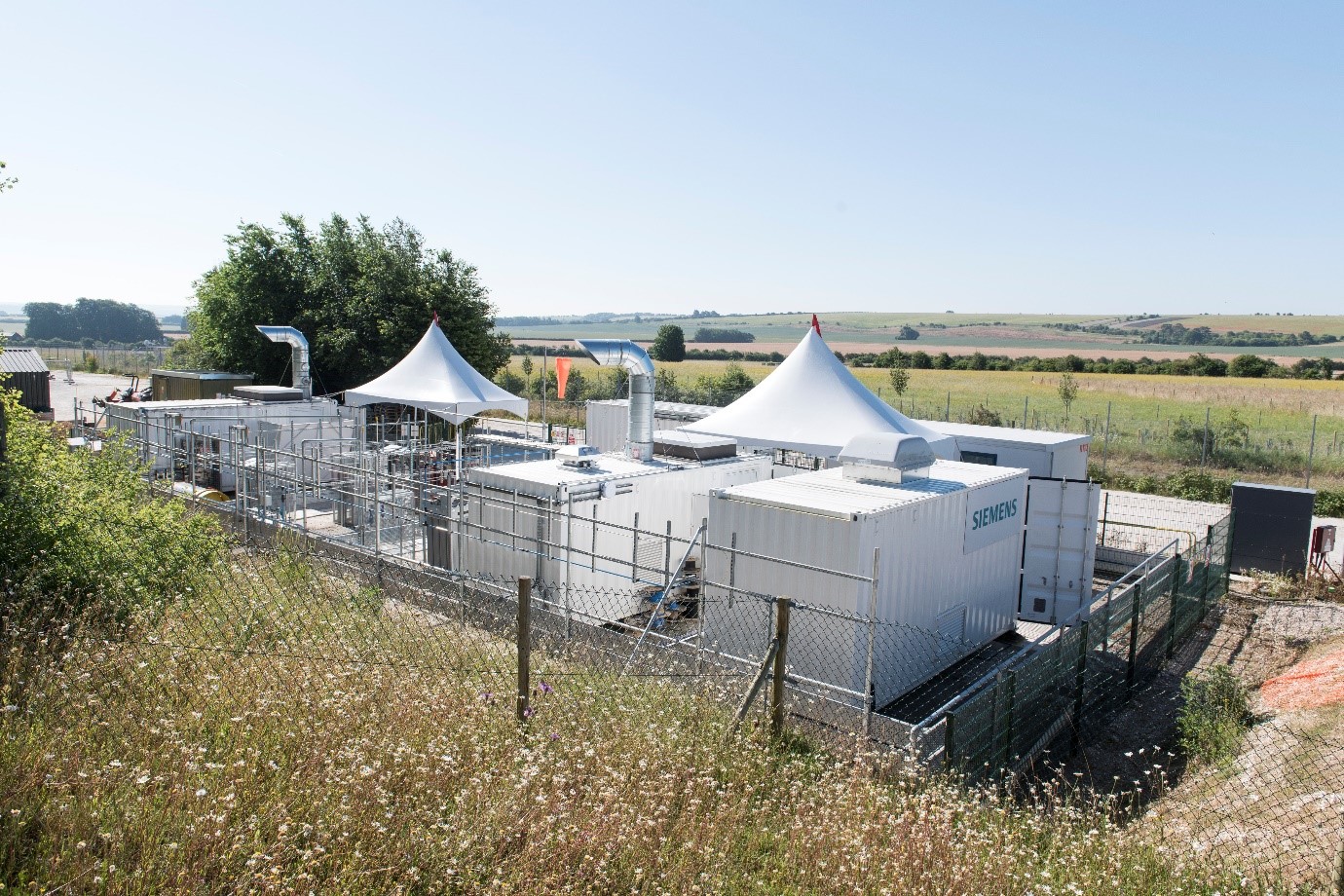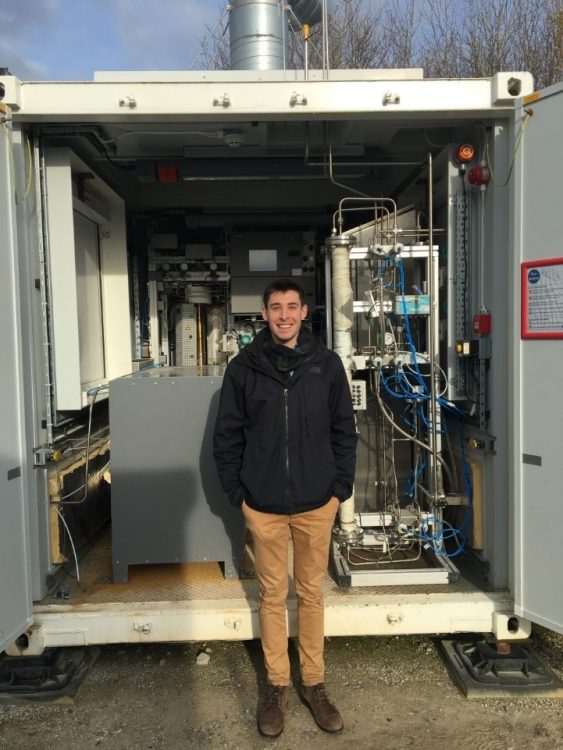From Fertiliser to Fuel
25 Feb 2020|Zac Cesaro
- Research
As the world seeks pathways to rapid decarbonisation, an old technology is gaining new attention as a carbon-free fuel. This month the BBC covered a special Royal Society report focused on using “green ammonia” for decarbonising transport (e.g. shipping), electricity, and fertiliser production.
In the Oxford Green Ammonia TEchnology (OXGATE) research group, we are researching green hydrogen and ammonia as feedstocks and fuels for our future. Green ammonia is fundamentally carbon-free (containing only hydrogen and nitrogen) and a completely green cycle when used for energy. Water, air and renewable electricity are combined to form ammonia (NH3). This ammonia is transformed back into power with the only by-products being air and water, once again. The base technology is well understood, and our team works to overcome the last remaining techno-economic obstacles to enable widespread adoption. To date, hydrogen (H2) has been more widely discussed than ammonia for clean energy purposes; however, hydrogen faces major challenges with large-scale storage and transport. Therefore, ammonia is increasingly being investigated as it is easier to store and transport with existing global infrastructure, and is even more energy dense than liquid hydrogen.
At OXGATE, our work in the Chemistry and Engineering Science departments includes catalyst development, prototyping, process design, and energy systems modelling related to green hydrogen and ammonia. Our group is at the cutting edge of green ammonia, as collaborators at the world’s first roundtrip ‘green’ ammonia pilot plant which was commissioned in June 2018 at the Rutherford Appleton Laboratory in Oxfordshire as a £1.5M collaboration between Siemens, the University of Oxford, STFC, Cardiff University, and Innovate UK. Since the UK demonstrator, another plant has been built in Japan and others are being planned in Australia, Morocco, Chile, Norway, the Netherlands, and New Zealand.


As a second year DPhil in Engineering Science as well as R&D Engineer at Siemens, I specifically investigate applications in developing countries that need to meet a growing demand without involving traditional fossil fuels such as coal and natural gas. This technology may be game-changing in developing countries, as it addresses the energy trilemma of clean, affordable, and secure energy– and it is fundamentally scalable for large-scale deployment in this decade. My research integrates green ammonia into national electricity system models to understand the optimal role of green hydrogen and ammonia in complex and changing energy networks, such as for seasonal energy storage.
Green ammonia is becoming cheaper quickly, as the price is closely linked to the price of wind and solar electricity. Already, green ammonia is likely cheaper than some oil products. As evidence of this fact, a telecom tower company in East Africa announced the conversion of 800 off-grid towers from diesel to ammonia, marking the competitiveness of ammonia for fuel in sub-Saharan Africa.
Green ammonia is one of the most scalable green fuels for two reasons: land requirements and existing international expertise. First, the amount of land needed for green ammonia production is small, especially when compared to biofuels. A recent report found that offshore wind potential in Morocco alone could provide green ammonia for about a third of the international shipping fleet. In comparison, biofuels would require the entire land mass of India to decarbonise international shipping. Second, ammonia is already produced at industrial scales in 64 countries from a range of income levels, e.g. USA, India, UK, China, Vietnam, Indonesia, Mexico, South Africa, etc. The expertise in ammonia synthesis and handling is widespread. Notably, this ammonia is ‘brown’ ammonia, which uses fossil fuels as a feedstock for the hydrogen molecules needed in NH3. Green ammonia involves the same ammonia production process (Haber-Bosch) except the hydrogen is generated by the splitting of water (electrolysis) and the entire process is powered by renewable electricity. Substituting fossil fuel hydrogen feedstock for water electrolysis is technologically feasible through new plant design and will be improved economically with further research.
In the findings of the latest IPCC 1.5 degree report, global emissions must be halved by 2030. To achieve this, disruptive green energy technologies must be deployed at large-scale in the next decade, especially in developing countries. While there are no silver bullets in the diverse energy landscape, we believe green ammonia has a very important role to play in this unprecedented energy transition and we are excited to be shining a light on this role.
Category: Research
Author

Zac
Cesaro
Zac Cesaro is an alumnus of St Edmund Hall who is doing a DPhil in Engineering Science.